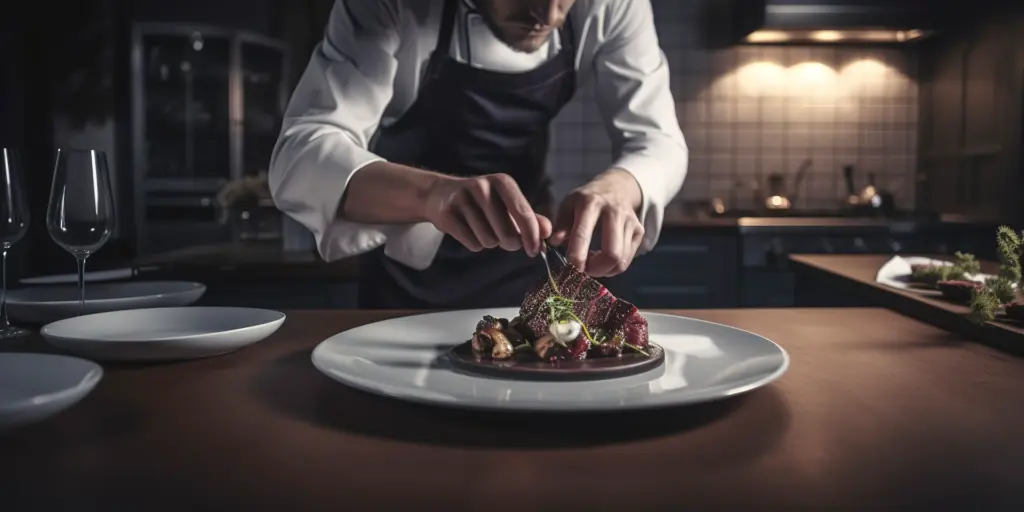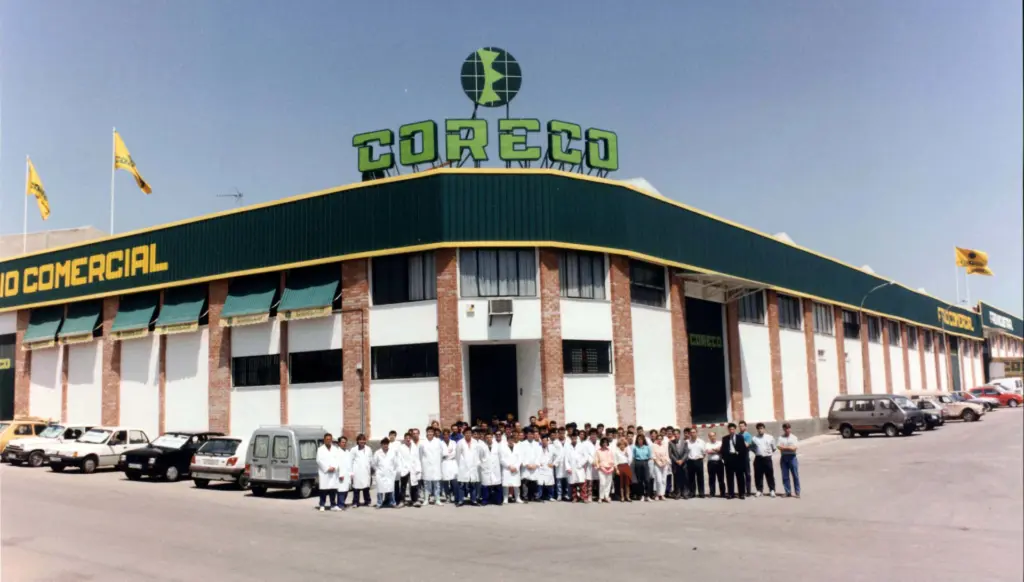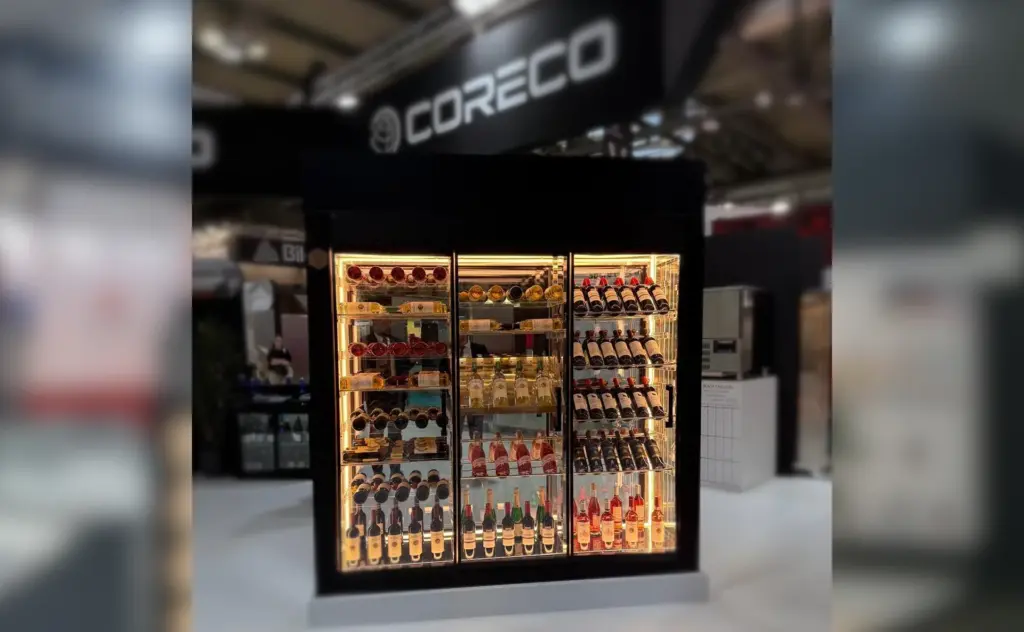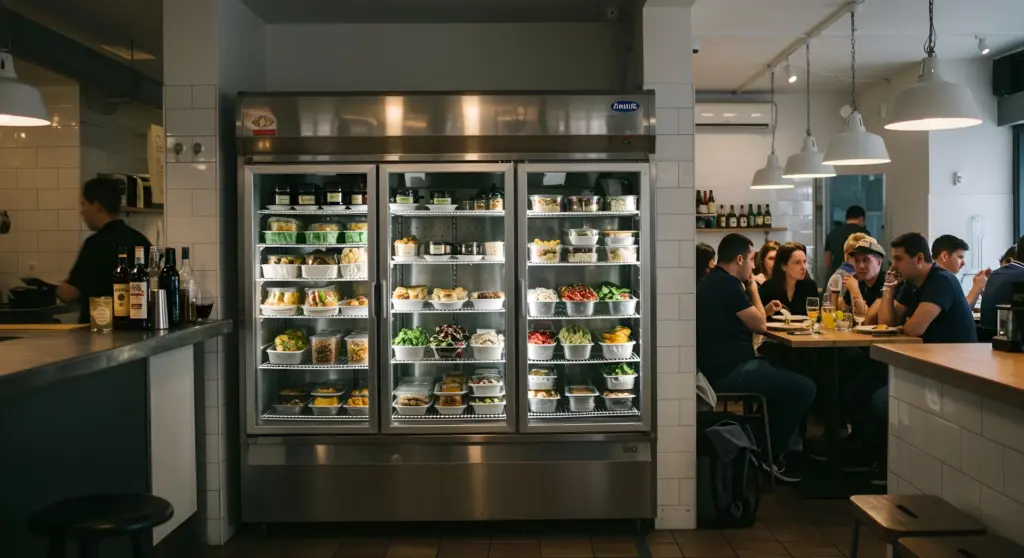In the Horeca and gourmet gastronomy sector, food safety is a top priority. Among the most important risks associated with the consumption of raw or undercooked fish is the Anisakisa parasite that can cause serious health problems. In order to ensure that seafood products are safe and high qualitythe temperature controllers are the best tool. They allow a fast and efficient freezingThis article explains how to remove the parasite without compromising the freshness and texture of the fish. In this article, we explain why Coreco Gourmet blast chillers are the ideal solution to combat Anisakis in professional kitchens.
If you want to know more about our range, you can see it in this link and have technical information of all the models in detail.
What is Anisakis and why is it a problem in professional kitchens?
The Anisakis is a parasite found in fish and cephalopods such as squid and cuttlefish. When these foods are consumed raw or undercooked, they can transmit live larvae to the consumer, causing anisakiasisan infection with symptoms such as:
✅ Severe abdominal pain
✅ Nausea and vomiting
✅ Difficulty digesting food
✅ severe allergic reactions (anaphylaxis in some cases)
The Anisakis is not only a public health riskbut also affects the reputation of restaurants and suppliers if appropriate measures are not taken to prevent it.
Spain is the country with the second highest number of Anisakis intoxications in the world, after Japan. This is mainly due to the consumption of preparations such as anchovies in vinegar, one of the most popular preparations, or sushi, which has been part of our habits for almost 3 decades now.
In summary, Anisakis represents a major challenge for professional kitchens due to the health risks involved, the legal obligations and the need to implement strict controls to ensure food safety for diners.
Methods of eliminating Anisakis: How do we ensure safe consumption?
In order to prevent anisakiasis, the European legislation (EC Regulation 853/2004) provides that fish intended for raw consumption must undergo one of the following treatments:
1️⃣ Cooking above 60°C for at least 1 minute.
2️⃣ Flash-freezing at temperatures below -20°C for at least 24 hours or to -35°C for 15 hours.
In gourmet restaurants, where the aim is to maintain the quality and freshness of fishthe most viable option is the blast freezing with blast chillersbecause preserves texture and flavour without compromising food safety.
How can anisakis be prevented in professional kitchens?
To prevent anisakis in professional kitchens, it is essential to follow a series of measures based on regulations and good food handling practices. These include:
1. Freezing of fish
- Freeze the fish at a temperature of -20 °C for at least 24 hours is an effective measure to eliminate anisakis larvae, especially in fish consumed raw or undercooked, such as sushi, ceviche or carpaccio.
2. Proper cooking
- Cook the fish to a minimum temperature of 60 °C in the centre of the product for at least one minute destroys the parasite. Methods such as frying, baking or grilling are effective.
3. Fish purchasing and handling
- Purchase gutted fish as soon as possible after catching reduces the risk of internal anisakis contamination4.
- Buy fish from reliable suppliers that meet food safety standards or products from marine aquaculture, which have a lower risk of containing anisakis.
- Store fresh fish at safe temperatures (≤4 °C) until processing.
4. Visual inspection
- Carry out a visual examination of the fish for larvae prior to preparation.
5. Implementation of the HACCP system
- Implement a programme of Hazard Analysis and Critical Control Points (HACCP) to identify hazards, establish critical controls (such as freezing and cooking temperatures) and carry out continuous monitoring.
6. Staff training
- Ensure that workers are trained in regulations and good food safety practices to prevent anisakis contamination.
These measures not only ensure food safety, but also comply with existing regulations to protect consumer health and avoid legal sanctions.
The role of blast chillers in Anisakis elimination
The temperature controllers are equipment designed to reduce the temperature of foodstuffs in order to fast and safeThis prevents the proliferation of micro-organisms and guarantees optimum preservation.
Its use in the preservation of raw fish provides two major advantages:
✅ 1. Effective elimination of Anisakis
Chillers can reach temperatures below -35°C in a few hoursensuring the total destruction of the parasite in a much shorter time than traditional freezers.
✅ 2. Preservation of fish quality
Unlike conventional freezing, which can take several hours and affect the texture of the fish, blast chilling avoids the risk of freezing the fish. formation of large ice crystalsThe original structure, flavour and juiciness are maintained.
Advantages of the Coreco Gourmet blast chillers
At Coreco Gourmetwe develop state-of-the-art temperature controllersdesigned specifically for hotel and gourmet catering. Its main features include:
| Feature | Benefit |
|---|---|
| Ultra-fast cooling | Reduces the temperature from -90°C to -18°C in minutes. |
| Regulatory compliance | Ensures the elimination of Anisakis in accordance with EC Regulation 853/2004. |
| Quality preservation | Prevents crystallisation of water inside the fish, preserving its texture. |
| Energy efficiency | Reduction of up to 55% in electricity consumption. |
| Precise temperature control | Programmable cycles adapted to each type of product. |
| Versatility | Ideal for fish, meat, ready meals and pastries. |
With this equipment, gastronomy professionals can guarantee that they can maximum safety without compromising culinary excellence.
Use cases in catering and gourmet gastronomy
The temperature controllers are essential in professional kitchens working with raw or undercooked fish. Some of the most common applications include:
🍣 Sushi and sashimi - They maintain the texture and flavour of the fish without risk of anisakiasis.
🥗 Ceviches and carpaccios - They stay fresh and have the perfect texture.
🐟 Anchovies in vinegar - They achieve a firmer and more uniform consistency after stoking.
⚓ Small-scale fisheries and seafood - They are slaughtered immediately after catching to preserve their freshness.
The quality of the final product depends on strict temperature control from catch to consumption.
What are the best practices for storing raw fish in a restaurant?
Best practices for storing raw fish in a restaurant include a combination of hygiene measures, temperature control and proper organisation. These are the main recommendations:
1. Maintain the cold chain
- Optimum temperature: Fish should be stored between 0 °C and 4 °C under refrigeration. For freezing, it should be kept at -20 °C or below to ensure freshness and prevent parasites such as anisakis.
- Use of ice: Placing the fish on a bed of crushed ice in a shallow container helps to keep it cool. It is important to drain excess water daily.
2. Cleaning and preparation
- Gutting and washing: Remove viscera, scales and blood before storage to avoid decomposition. This step can be done on arrival at the restaurant if not done at the fishmonger's shop.
- Storage area hygiene: Cold stores should be cleaned weekly to avoid contamination.4.
3. Organisation and separation
- Avoid cross-contamination: Store raw fish in airtight containers or sealed bags, separate from other raw foods such as meats or cooked foods. Place it on the lower shelves of the refrigerator to avoid drips.
- Separate freezing: Freeze different types of fish in individual trays or packages to avoid mixing of flavours and to facilitate thawing.
4. Product rotation
- Apply the FIFO principle (first in, first out) to ensure that the oldest products are used first.
- Label containers with the date of receipt for better inventory control.
5. Safe thawing
- Thaw fish slowly in the coldest part of the refrigerator for 24 hours. Avoid rapid thawing at room temperature or with hot water, as this encourages bacterial growth.
6. Staff training
- Ensure that employees are trained in good fish handling, cleaning and storage practices to ensure food safety.
By following these practices, the freshness, quality and safety of raw fish is guaranteed, protecting both the health of customers and the reputation of the restaurant.
Coreco Gourmet: Innovation in safety and energy efficiency
The temperature controllers not only guarantee the elimination of AnisakisThey also improve the preservation of the fish, making it possible to offer fresh and safe products with the highest quality standard.
At Coreco Gourmetwe are committed to the innovation, sustainability and energy efficiency in professional refrigeration. Our equipment is designed for optimise energy consumption and comply with the most demanding regulations in the Horeca sector..
If you want to guarantee the maximum safety and quality in your professional kitchen, discover our range of temperature controllers at Coreco Gourmet and takes food safety one step further towards security. 🚀











